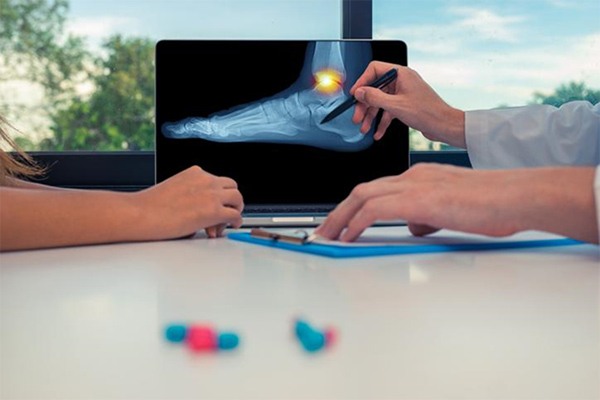
Foot and ankle arthritis doesn’t just cause discomfort—it can limit your independence, disrupt your daily routine, and diminish your overall quality of life. If pain is keeping you from walking, exercising, or activities you love, now is a good time to take action. This Arthritis Awareness Month, let’s explore what to do when conservative treatments no longer provide the relief you need.
Recognizing the Signs of Progressive Arthritis
In the early stages, foot and ankle arthritis may respond well to rest, supportive footwear, braces, physical therapy, and medications. However, foot and ankle joints bear your body weight with every step, making them especially vulnerable to wear and tear. Over time, you may notice persistent swelling, stiffness, or pain that worsens with movement. As cartilage wears down and bones begin to rub against one another, daily activities can become increasingly difficult and painful. When conservative options stop providing sustained relief, it may be time to take the next step.
Surgical Options for Severe Foot and Ankle Arthritis
Surgical treatment may provide the best path to relief if joint damage is significant. A thorough evaluation, including imaging studies, helps determine the most appropriate surgical approach based on the location, severity, and pattern of arthritis.
Joint Fusion (Arthrodesis)
Arthrodesis involves fusing two or more bones to eliminate movement at a severely arthritic joint. This procedure is especially effective for arthritis in the hindfoot or midfoot, where stability and pain relief are the primary goals. By stopping motion at the arthritic joint, fusion significantly reduces pain and can improve overall function, particularly for patients with high physical demands, poor bone quality, or deformity.
Total Ankle Replacement (Arthroplasty)
In contrast, total ankle replacement is designed to preserve joint motion by replacing the damaged joint surfaces with artificial implants. It’s typically recommended for patients with advanced ankle arthritis, good bone quality, and lower-impact lifestyles. For the right candidate, ankle replacement offers more natural movement and can help maintain gait mechanics better than fusion. It’s especially appealing to patients who want to remain active in lower-impact activities like walking, biking, or golfing.
If foot or ankle arthritis is taking over your day-to-day life, don’t wait for things to get worse. Book an appointment with Dr. Dean to learn about your options.
AUTHOR: Dr. Daniel Dean is a board-certified and fellowship-trained foot and ankle orthopaedic surgeon. He treats all musculoskeletal pathologies of the foot and ankle in adolescent and adult patients. He has specialized training in total ankle arthroplasty, sports injuries, flatfoot, complex fractures, and minimally invasive techniques in bunion correction.












